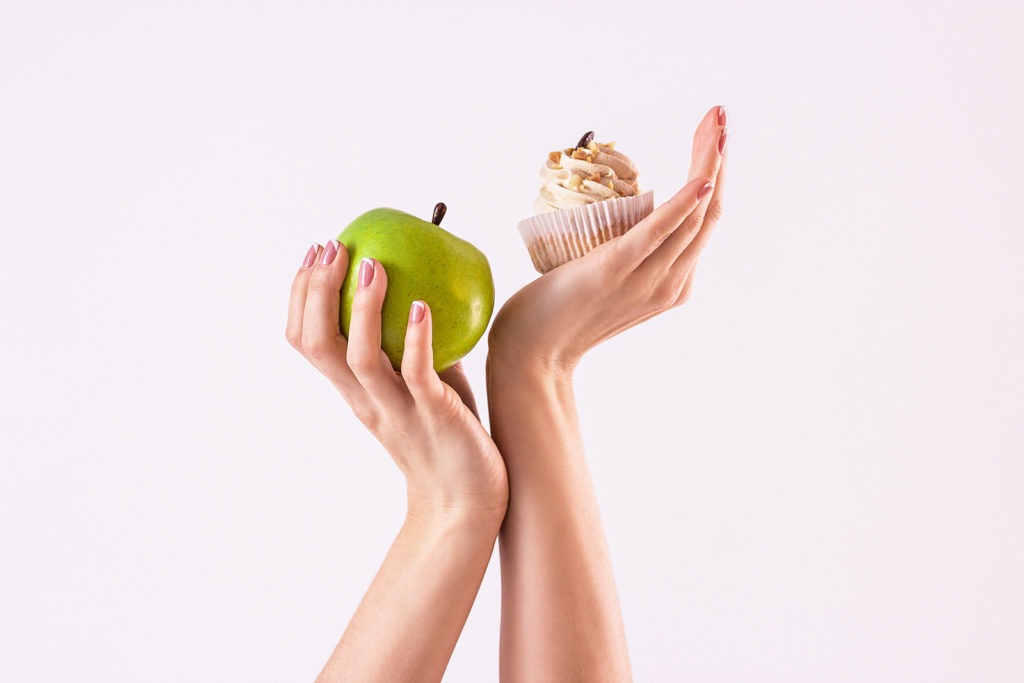Blog
How much sugar should I eat?
 One of the most common questions asked by our community is: how much sugar should you have per day? For a seemingly simple question, this answer is not so simple as there are various recommendations around daily sugar intake. Some are based on total sugar intake, while others are based on free (or added) sugar intake specifically.
One of the most common questions asked by our community is: how much sugar should you have per day? For a seemingly simple question, this answer is not so simple as there are various recommendations around daily sugar intake. Some are based on total sugar intake, while others are based on free (or added) sugar intake specifically.
So how much sugar per day should we be consuming?
That Sugar Movement endorses the World Health Organization’s (WHO) recommendation that for optimal health we should restrict our intake to just 25 grams (g) or 6 teaspoons (tsp) of ADDED or FREE sugar per day, which is 5% of our total energy intake. Therefore children should be consuming less than 25g, and children under two years old shouldn’t be consuming it at all.
In Australia, it is estimated the average daily sugar intake of free sugar is 60g (14 tsp), with teenage males being the highest consumers, some eating 160g (38 tsp) a day! This excess consumption is contributing to the rise in many diet-related illnesses.
What does the recommended daily sugar intake for added and free sugars mean?
Free sugars include simple sugars added to foods and beverages by the manufacturer, cook or consumer, and sugars naturally present in honey, syrups, fruit juices and fruit juice concentrates (WHO). Regardless of the source of these sugars or level of processing, they have the same impact on the body and count towards your 25g of sugar per day. Note, the terms ‘added sugar’ and ‘free sugar’ are often used interchangeably.
It is important to scan the ingredients list for added sugar. There are many names for sugar but some key ones to look out for are words ending in ‘ose’ (glucose, fructose, dextrose, sucrose…), and honey, syrups, juices, concentrates, nectars and crystals.
What about naturally occurring sugars? Do they count towards the recommended sugar intake?
Fructose is the naturally occurring sugar found in whole fruit (and a smaller amount in vegetables). It is encased in fibre which helps to slow down the absorption, so it doesn’t get fast, direct access to the liver like it does when it is ‘free’. So, yes, we absolutely endorse eating fruit, and sugars in whole fruit and vegetables do not count towards your added sugar intake.
The other naturally occurring sugar is lactose, found in dairy products. Lactose does not count towards your daily added sugar intake. When reading a label for plain dairy, it will only contain lactose which will be around 5 grams of sugar per 100 grams or mL of product. However, products such as flavoured milk and yoghurt are most likely to have sugar added to them. By subtracting the 5g of lactose per 100g, you can work out roughly how much sugar has been added.
Daily sugar intake: Make informed choices and be kind to yourself
Unfortunately, sugar has snuck into many packaged products including items we think are healthy, and current labelling laws in Australia do not require the added sugar amount to be separated from the total sugar on the nutrition information panel. This makes it difficult for consumers to determine exactly how much sugar has been added to a product versus how much is naturally occurring.
If you are working towards reducing your added sugar intake, ensure you flip the packet and check the labels. A general rule of thumb is if a product contains added sugar, aim for 5g or less of sugar per 100g. These are considered to be ‘low-sugar’. Better still, eat mostly whole or minimally processed foods that don’t require a packet or ingredients list! This way you’ll be consuming minimal free or added sugars.
Sugary drinks should be avoided as much as possible as most exceed the recommended daily average sugar intake in one serving!
The bottom line is, a little bit of sugar is okay. Just remember to make informed choices and be kind to yourself as you work towards limiting your free (or added) sugar intake to 25g a day!
By Jennifer Peters, ANutr
Public Health Nutritionist











